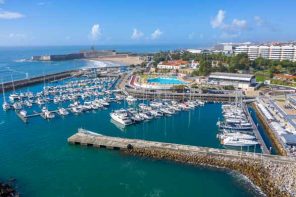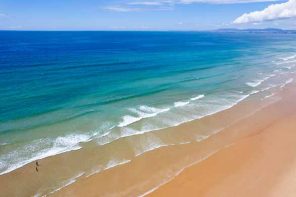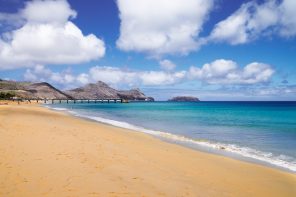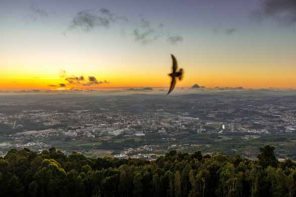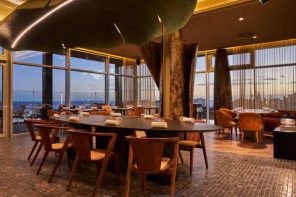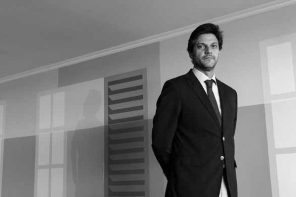IN LEIRIA’S DISTRICT, JUST A BIT OVER AN HOUR AWAY FROM LISBON, DISCOVER A TOWN PROUD FOR BEING A THERAPEUTIC AND ARTISTIC REFUGE.
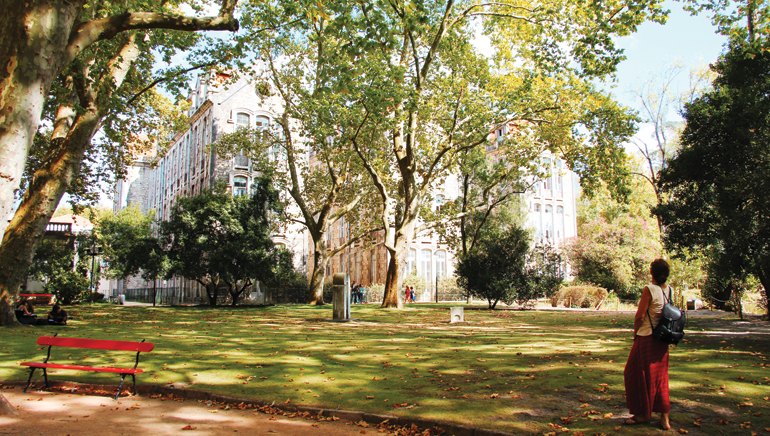
Complexo Termal
So the story goes, sometime in the fifteen century, on her way to Batalha, Queen Leonor, for long afflicted by a wound that wouldn’t heal, stopped here and was able to concur with the spreading news of this spa water’s wonderful qualities. The following year she had a hospital built in the site, hence starting the fame of Caldas da Rainha and the reason for its name.
The therapeutic vocation of this town got consolidated as time went by, reason for its growth. King Afonso VI was responsible later on for the reconstruction and enlargement of the hospital, which brought the royal family and nobility to Caldas on an annual basis. During the nineteen century, an auspicious time throughout Europe for thermal spas, Caldas did not stay behind the more refined European destinations, becoming a selected resort for the well do to class.
The relevance of the thermal spa activity in Caldas finds its point of reference at the Thermal Complex, a site that includes the Thermal Spa Hospital and the Hospital and Caldas da Rainha Museum. Both spaces reveal the history throughout the times of the oldest thermal spa hospital in the world and of the therapeutic activities practiced here.
A GREAT ART SHOW
At the magnificent King Carlos I Park in the city center, one discovers a romantic garden with a design by a famous Caldas architect, Rodrigo Berquó, who took in charge the revitalization of the park. Inside, the José Malhoa Museum, one of the most emblematic museums in town, keeps an important collection of works by the famous painter, also born here. The 1940’s museum is installed in the first building erected in Portugal from origin for the exclusive purpose of housing a museum.
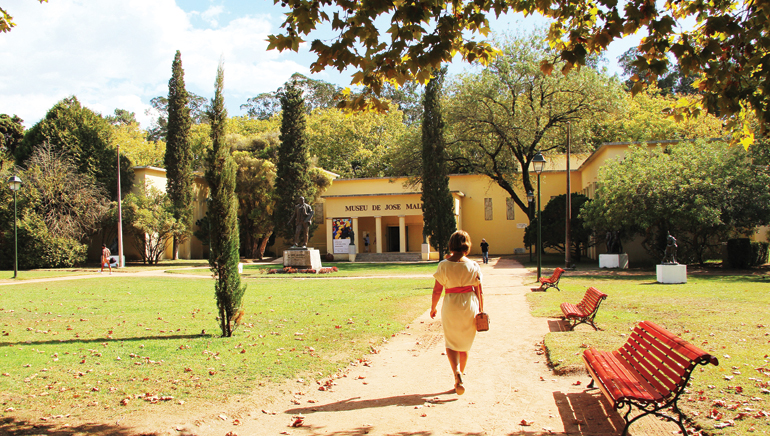
José Malhoa Museum
The connection of Caldas da Rainha with art and the rich legacy that is indebted to it, is witnessed in other points along the Park. Such is the case of the Art Center, that includes four spaces: the Atelier-Museum António Duarte, with a collection of paintings, sculptures, drawings and religious art donated by the sculptor; the Museum Barata Feyo, that gathers the most valuable artworks from this sculptor, such as portraits and expressions of public and religious sculpting; the AtelierMuseum João Fragoso, housing a significant part of the work by this great Caldas sculptor as well as a workshop space that allows for the continuity of his artistic production; the Leopoldo de Almeida Museum, exposing a rich collection comprising 285 sculptures and almost 900 drawings donated by the heirs – which includes the artist Helena Almeida – of the sculptor Leopoldo de Almeida (1898-1975).
Ceramic arts are in fact the second reason, after the thermal baths, for the town’s reputation. The Ceramics Museum, located at the Visconde de Sacavém’s old Palatial House, is surrounded by extensive gardens, with alleys, planting pots, flower beds, lakes and an open-air auditorium, reveals a collection of dishware from Caldas and other Portuguese and international ceramic centers – in a true journey through the history of this art, extending from the eighteen century to modern times. One of the most interesting features of this museum has to do with another illustrious name of this town, as we find here a collection of works by Rafael Bordalo Pinheiro.
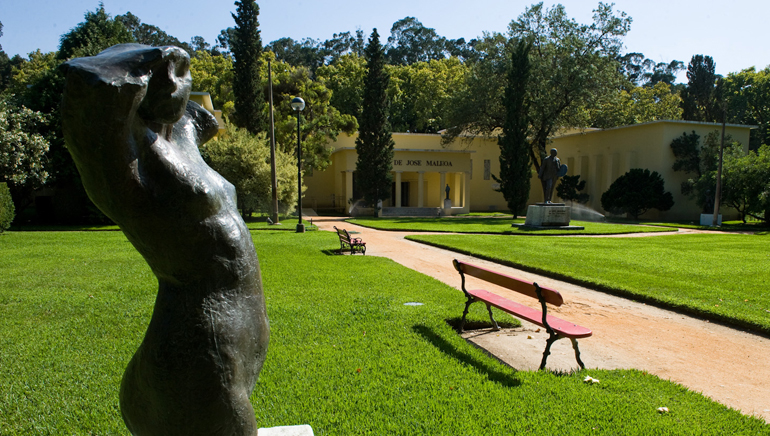
To mention Caldas is to talk about Bordalo; the Caldas da Rainha Ceramics Factory was created by him in 1884 with the help of Ramalho Ortigão, becoming an international reference in the sector and its pieces icons of Portuguese culture, present in thousands of homes. The São Rafael House Museum exposes pieces created at the factory next door and providing an idea of the evolution of this brand throughout the times; in the nearby shop, multiple collections of its colorful lines of dishware and ceramics are available for sale.
A good proof of Bordalo’s relevance to Caldas is the homage that it’s shown along the streets; spread along what is a true bordalian path, human size pieces of sculptural art work, inspired in the artist’s vast imaginative world, catch the visitors by surprise, in one of the most amusing ways of getting to know Caldas town center.
GASTRONOMY AND LEISURE
At the town center, we find República Square, also known as the Fruit Square. With origins dating back to the fifteen century, this colorful outdoor market is the only one in Portugal that opens every week day. It is a display window for the rich agricultural and gastronomical production of the region and a privileged site to observe Caldas New Art. Tile decorated, Romanesque building facades encircle this vibrant square that also houses the historic Café Central and the São Sebastião Chapel. Those interested in Arte Nova can go from the square to the nearby Dr. Miguel Bombarda Street and continue enjoying more examples of this art movement, in what is known as the Arte Nova Route.
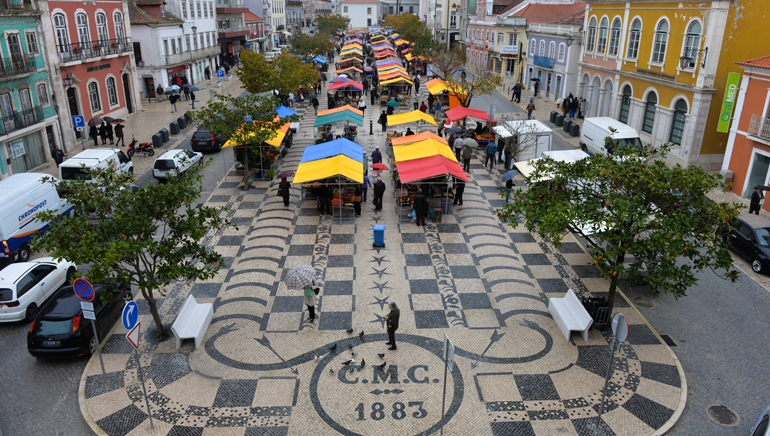
Fruit Square
For those that favor the outdoors, there is the Rainha D. Leonor Woods, created to protect the thermal water sources that supply the Hospital; it is a site filled with natural beauty, with imposing trees and 42 acres of pure air, perfect for refreshing walks.
Going back to the gastronomy of the region, two different characteristics can be noted: one is the richness of the desserts, influenced by the traditions developed in the religious convents – the Caldas trouxa de ovos, cavacas and beijinhos, local pastry, are a good example. The other, given the proximity to the Óbidos Lagoon, is the marine richness of its typical dishes, as revealed in the caldeirada, (a fish stew), eel broth and shellfish.
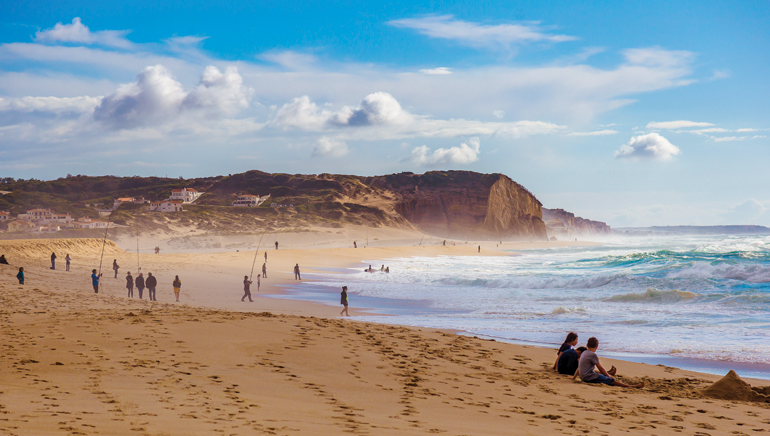
Foz do Arelho
The proximity from Caldas to the enchanting Foz do Arelho beach is the main reason to prolong the visit to this impressive Óbidos Lagoon and its boardwalks, the Passadiços. Whenever in or near Caldas, one is always close to the healing powers of water and mere contemplation.


